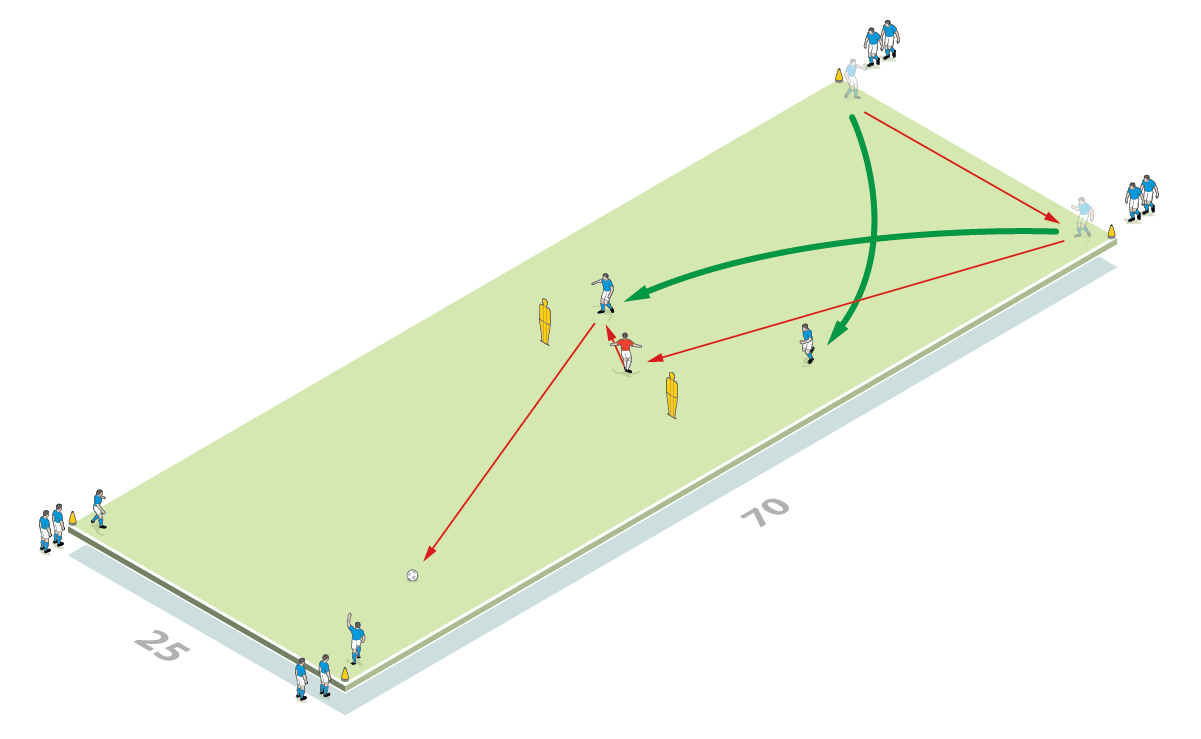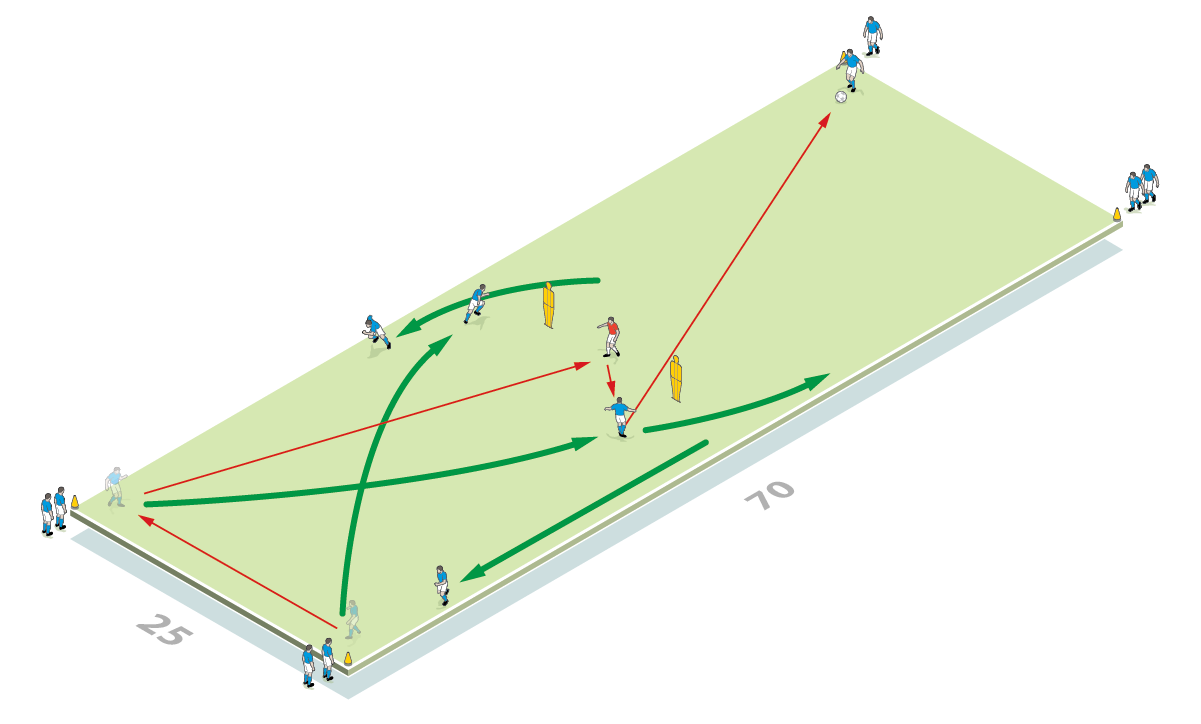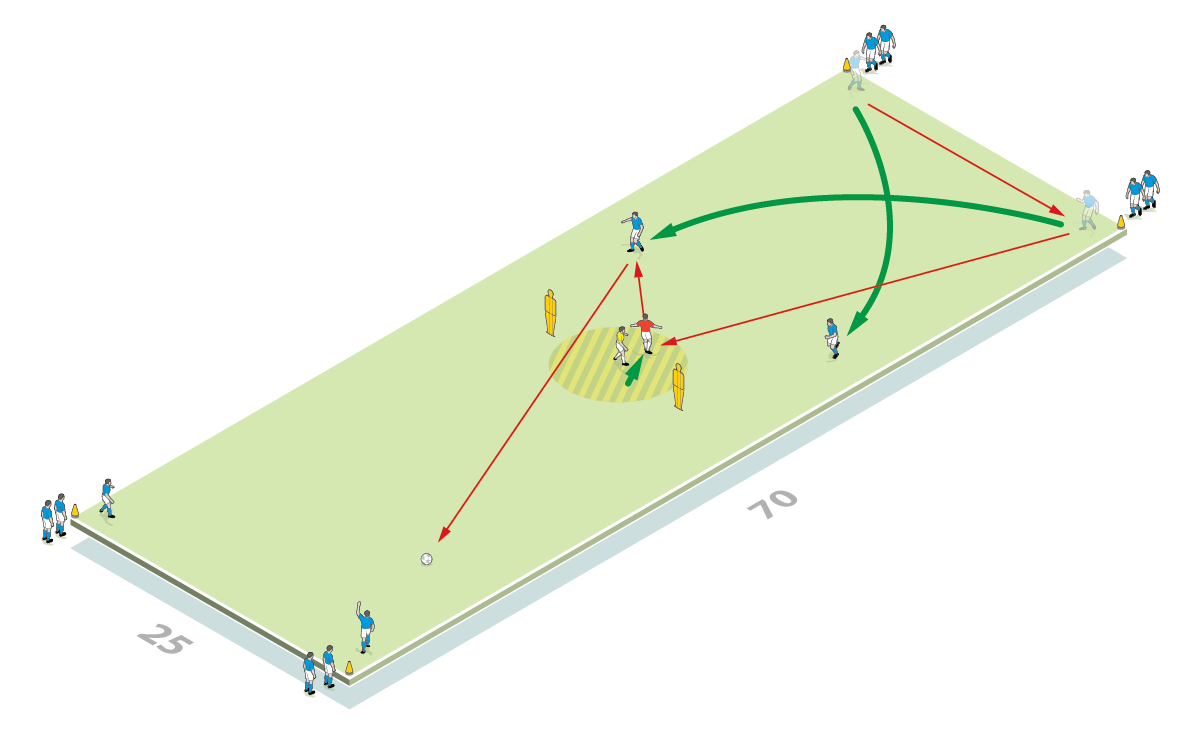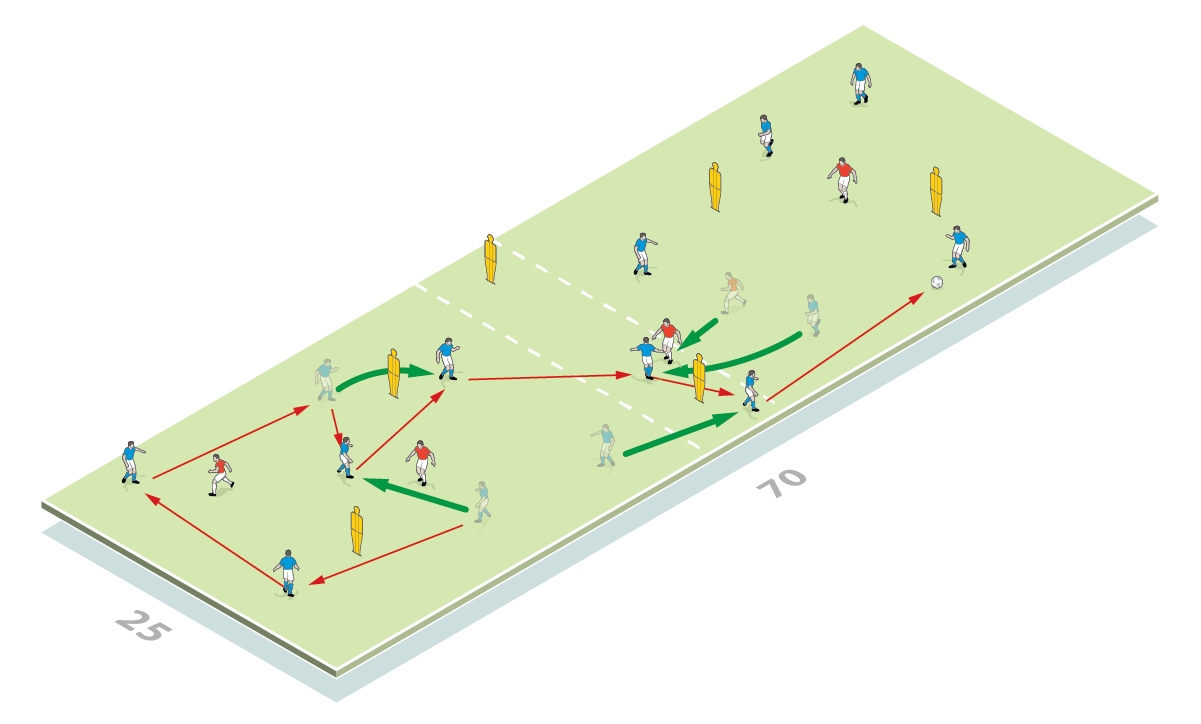You are viewing 1 of your 1 free articles
Playing through the thirds with your number 10 as a playmaker
This session looks at retaining possession in aiming to find the number 10 (the attacking midfielder) in between the lines.
| Area | Up to 60x40 yards |
| Equipment | Balls, cones, goals |
| No. of Players | Up to 14 |
| Session Time | Each practice 20mins |
We practise this because the area between the lines of defence and attack is the vital space for the creation of our own goalscoring chances and prevention of opposition breaks.
Working on this space and the principle of the attacking midfielder becoming the playmaker has led to us creating more chances and scoring more goals at a crucial point of the season, with our midfielder Jim O’Brien taking the mantle with a number of impressive displays in this position.
What do I get the players to do?
For each practice we create an area measuring 70x25 yards, although the size can be adapted to suit the standard and age of the players.
Passing crossovers
This practice represents the centre midfielder finding the number 10 (attacking midfielder) before playing the set pass. It allows the centre midfielder to play forward early into the centre-forward’s feet.
Mannequins are used to represent defenders (although discs or cones will suffice). The number 10 stays in the middle area at all times and can move between the two middle mannequins.
The ball is passed across the top edge. The receiver then plays first time into the number 10’s feet (the red player). The two blue players then advance, cross over positions, and one receives a set pass from the number 10. The ball is then passed first time, and always diagonally, to an end player back on the baseline (1a). Once crossed over, players continue their runs to the end mannequins.
1a

In Passing Crossovers, blues link up, thread a pass into the number 10, and one receives a return pass as the runs cross over. The ball is then played out to the other side
The practice then continues with the two new front players (1b).
1b

How do I progress the session?
We now add a defender between the two middle mannequins, who must try to intercept the passes whilst getting tight to the number 10, therefore denying him time on the ball (2).
2

The number 10 must now make a movement away from the defender to create space for himself, allowing him time to play the set pass.
What are the key things to look out for?
Players must pass first time whenever possible. For the number 10, versatile body shape and creative movement is vital to the practice, and he must create space for himself in receiving the ball, looking for the type third man running and support play that is expected of the other working players.
5v2 possession
Here, the five attackers must complete five consecutive passes before playing forward into the number 10 who, from the opposite area, drops into the middle channel to receive. He must receive the ball on his back foot, turn, and play into the other area, where the practice continues (3). He then re-joins his group.
3

If defenders win the ball or if it is lost, play a new one into the opposite area for the practice to continue. Rotate players every few minutes.
What are the key things to look out for?
The number 10 must time his move into the middle area, and must be side-on to play so he can play forward quickly.
How do I progress the session?
When ball is passed into the number 10, a defender can also come into the area to try to win the ball (4). One attacker can also come in to receive a ball from the number 10 before passing into the opposite area. He then returns to his area. The emphasis is on third man running when the ball is passed into the number 10.
4

How do I put this into a game situation?
Play 7v7 in a 60x40-yard area split into three equal sections which players must stay in – 3v2 (in favour of defenders) in the first area, 2v2 in the second and 2v3 in the third. There is also a neutral player who plays with the attacking team and can receive the ball in the final two thirds (to create 3v2 and 3v3 situations). The emphasis is on movement off the ball in the final third to allow a team mate to receive in beyond the defenders, leading him to play forward (5).
5

To progress, encourage third man running and creative, intelligent play by allowing one player from the middle third to move into the final area to create a 3v3 (6).
6

Related Files
Editor's Picks
Intensive boxes drill with goals
Penetrating the final third
Creating and finishing
My philosophy
Pressing initiation
Compact team movement
Defensive organisation
Back three tactics
Counter-pressing as an offensive weapon
Coaches' Testimonials

Alan Pardew

Arsène Wenger

Brendan Rodgers

Carlos Carvalhal

José Mourinho

Jürgen Klopp

Pep Guardiola

Roy Hodgson

Sir Alex Ferguson

Steven Gerrard
Coaches' Testimonials

Gerald Kearney, Downtown Las Vegas Soccer Club

Paul Butler, Florida, USA

Rick Shields, Springboro, USA

Tony Green, Pierrefonds Titans, Quebec, Canada
Join the world's leading coaches and managers and discover for yourself one of the best kept secrets in coaching. No other training tool on the planet is written or read by the calibre of names you’ll find in Elite Soccer.
In a recent survey 92% of subscribers said Elite Soccer makes them more confident, 89% said it makes them a more effective coach and 91% said it makes them more inspired.
Get Monthly Inspiration
All the latest techniques and approaches
Since 2010 Elite Soccer has given subscribers exclusive insight into the training ground practices of the world’s best coaches. Published in partnership with the League Managers Association we have unparalleled access to the leading lights in the English leagues, as well as a host of international managers.
Elite Soccer exclusively features sessions written by the coaches themselves. There are no observed sessions and no sessions “in the style of”, just first-hand advice delivered direct to you from the coach.








